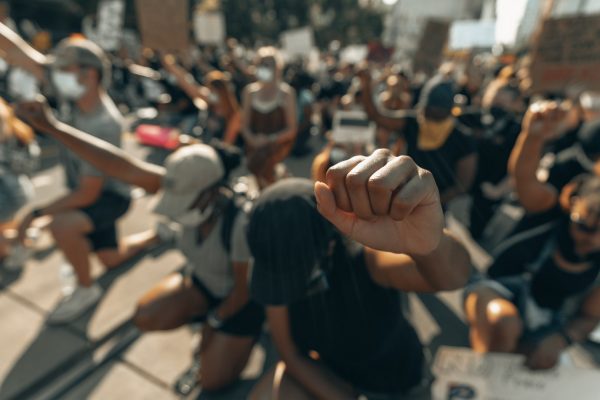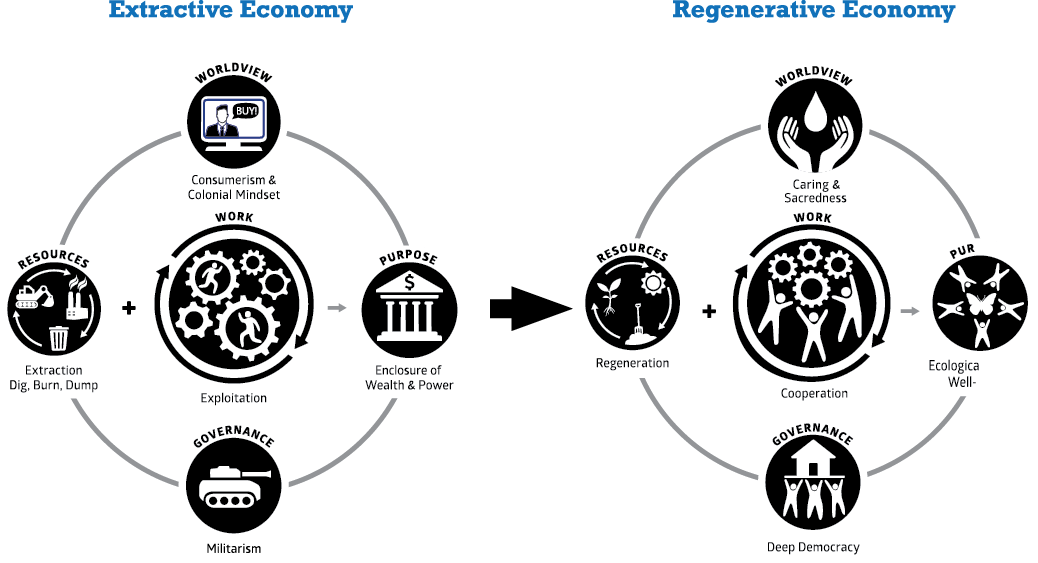The streets and airwaves are full of frustration and grief at the entrenched patterns of injustice and oppression that harm Black, Indigenous, and People of Color. I want to add my voice to the many who are galvanized to be part of the generation that changes the patterns.
This is a moment to take in the pain and not look away; to mourn the loss of George Floyd, Breonna Taylor, Trayvon Martin, Tamir Rice, Sandra Bland, Michael Brown, Eric Garner and each irreplaceable person who needlessly died  from violence; and recognize the grief their families and communities have to endure. And to recognize there are many tentacles of how racism functions at multiple levels – such as microaggressions, hiring practices, housing policies, voting rights, wealth and resource distribution; ranging from the personal to the systemic.
from violence; and recognize the grief their families and communities have to endure. And to recognize there are many tentacles of how racism functions at multiple levels – such as microaggressions, hiring practices, housing policies, voting rights, wealth and resource distribution; ranging from the personal to the systemic.
As a white woman, I acknowledge that I’m shaped by, participate in, and benefit from, the unjust systems that privilege white people. I’ve been on a learning curve to understand the visible and less visible ways that white supremacy works and the deeper roots of these patterns that started long before us. I know I have a lifetime of learning and unlearning to do.
I see a large wave of people and organizations making a renewed commitment to work for racial equity and justice. I also see the frustration of how long unjust practices have gone on without fundamental change. As this article, Privilege, power, and personal conflicts: The forces preventing change in nonprofit and philanthropy, by Vu Le points out, in the philanthropy and non-profit sector, there are proposed changes that “people with the most lived-experience with injustice have proposed for decades.” He sees the real work of racial justice requiring that we confront power dynamics. Those with the power to make decisions have to be in the conversations about these issues, e.g., not create a side committee. He also addresses our individual tendency to not speak up or push for change if it threatens our own job security or sense of belonging in the group.
What will it take to translate all of this intention and commitment to racial justice into meaningful change? Some people are new to this; some have been at it a long time. From my journey so far, I humbly offer some resources and areas I see as critical to doing this work. These ideas are aimed at white people who want to step up, though there are resources for anyone encountering challenges in racial equity work.
Acknowledge What Is. I will start with a quote from James Baldwin, an incredible writer on race in America (see I Am Not Your Negro documentary):
1) Not everything that is faced can be changed, but nothing can be changed until it is faced.
2) It is certain, in any case, that ignorance, allied with power, is the most ferocious enemy justice can have.
~ James Baldwin, 1924-1987
An initial step to changing or healing is to get a deeper understanding of the truth of what is and acknowledge it. In the US, much is left out in the ways history is told and the media reports things. Segregation has created conditions where many white people have few black friends and do not come into regular contact with people living the reality of racism. Unjust systems stay in place when there is denial and avoidance.
There is so much to learn about the roots and current context of how racism works, especially for white people. “Privilege is blind.” It’s critical to be informed before jumping into this work, as there are common pitfalls and problems that uninformed people make. The NH Workplace Racial Equity Learning Challenge offers a broad overview of resources with many links to learn about racism and how to take action.Also, this is a great resource document, organized by where you are on the path: Scaffolded Anti-Racist Resources.
Understand How Whiteness and White Reactivity Operate. The patterns will perpetuate themselves unless there is awareness and intentional action for change. It’s critical to turn the lens on whiteness and white culture and understand the dynamics of what whites do when the racism topic comes up. The New York Times bestseller lists are full of anti-racism books. The podcast Seeing White by Scene on Radio is an excellent resource for exploring the history and culture of whiteness. This video by Robin D’Angelo shines a light on common patterns of white people when engaging on these issues and how they block progress.
White fragility is a major part of maintaining white dominance, and to be more direct, white supremacy. The term ‘white supremacy’ certainly includes what we would think of as neo-Nazism or outright racism. But it is also a highly descriptive sociological term for the society we live in, in which all institutions—languages, norms, policies—reflect and affirm white people at the expense of others. It’s the water we’re swimming in and we’ve all been shaped by it, consciously or not. And so to not be able to challenge any of this, lest white people feel attacked and unsafe, perfectly holds it in place. – Robin D’Angelo
Build Relational Skills for the Challenges of the Work – The work of racial equity is uncomfortable and involves conflict and difficult encounters. This is to be expected, knowing we’re dealing with hundreds of years of inherited trauma, personal trauma and identity, and inequities in power and privilege.
The core skills of listening and acknowledgement can be hard to access when people are feeling defensive and hurt. I recommend the work of Sarah Peyton, who explains the neuroscience behind staying in healthy social engagement and using ‘resonant language.’ Here are some of her definitions to give you a flavor:
- “Attunement is the experience of someone focusing on us with warm, respect and curiosity. This person wonders what it is like to be us, using all available human sensitivities to tune into us.”
- “Resonance is what happens when we have a sense that the other person really gets us….it calms us the most.” These are quoted from her book Your Resonant Self, which I recommend.
Most of us haven’t been trained in how to communicate like this. Our impulse is to defend and respond as opposed to really listen and ask more questions and resonate/validate the feelings of the other person. A resource we’ve found helpful in navigating the challenges of inter-racial dialogue and tensions is Difficult Conversations.
This is where I see the need for more skill building by drawing on expertise in related fields. It is necessary to learn how to be in the tension and discomfort of racial dialogue without retraumatizing people or fracturing the relationship or community. We need to learn to hold space and respond in helpful ways when we, or those we are interacting with, are triggered. My Grandmother’s Hands by Resmaa Menakem is a good resource for understanding how we all hold racialized trauma and how that plays out in interactions.
Envision New Systems and Move Resources – Tremendous work is being done to envision how we can transition to healthy, just systems and ways of relating. Those dealing with the harms of the current unjust systems need to have voice, participation, and be central in the work. It’s also time to put resources directly in the hands of these leaders. Here are some examples:
- The work of the Just Transition Framework is an example of a vision for how we can move from an extractive economy to a regenerative economy, developed by labor unions and environmental justice groups, rooted in low-income communities of color.
- The Just Transition for Philanthropy framework from Justice Funders maps the path of how philanthropy can move from extractive practices that take wealth from communities to regenerative practices based in reciprocal, responsive relationships.
- When you take in the scale of harm done, you can see how reparations need to be part of the collective healing process, to right past wrongs. Conversations on reparations go beyond a one-time charitable payout to a vision of where communities of color have control of land, resources, and means of production to generate economic wealth for themselves. Here’s an example relating to land and food production: A Reparations Map for Farmers of Color connecting black and brown farmers in need of land and resources with organizations and resources.

